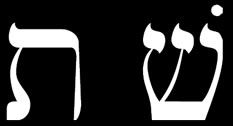|
|
|||
 |
|||
|
TATTOO DESIGNS & SYMBOLS - HEBREW TATTOOS
Tattoo Symbol Index - A B C D E F G H I J K L M N O P Q R S T U V W X Y Z Tattoo designs - H >> Hebrew Hebrew Tattoo Meanings - "Ye shall not make any cuttings in your flesh for the dead, nor print any marks upon you: I am the Lord." Leviticus 19:28 notwithstanding, Hebrew is a favourite script for tattoos. The 22 letters of the Hebrew 'alephbet' are elegant, pictorial, and ancient.
Poetry, prayer books, and foreign words were the first to get the vowel treatment, while religious texts remained true to the old ways. Hebrew text is written horizontally from right to left, which is the first reason to consult an expert before engaging a tattooist to 'etch a tattoo on yourself'. Also, those missing vowels can lead to misinterpretation of an isolated tattooed word devoid of context.
The large number celebrities sporting them on the red carpet have bolstered the popularity of Hebrew tattoos. Madonna, the Beckams, Britney Spears and Christina Aguilera are feeling empowered by taking on tattoos written in a script that has such ancient and powerful religious associations. The Beckams - Victoria and her soccer star husband, David - took on matching Hebrew tattoos as a testament to their mutual love. Their tattoos read: "I am my beloved's and my beloved is mine." It's a Biblical quote from the Song of Songs, a phrase often inscribed on wedding rings. Though their tattoos have the same meaning, the text is slightly different. Hebrew words may change according to who's speaking, male or female. Foreign language text often presents the danger of inaccurate tattoo translation. Hebrew is especially vulnerable to faulty interpretation, especially if the desired tattoo is a slogan in a different language. "Rock and Roll Will Never Die!" may lose its meaning when translated in Hebrew. Indeed, some words don't have equivalents in other languages.
Hebrew has its own hazards, due to the script's special calligraphic demands. In English, an 'A' can be carelessly rendered and still be recognized as an 'A'. Not so Hebrew characters which have precise lines, ticks, arcs, zigs and zags. It's not hard to say what you don't mean, if you're not a skilled linguist. Britney Spears is reported to have had a Hebrew tattoo lasered off the back of her neck because of just such an error. She was trying to spell 'God', of which the Kabbalah suggests there are 72. Or is that 72 ways to go wrong? Britney, of course, was following in the dangerous footsteps of her idol, Madonna, who had also taken on a similar tattoo, and who, perhaps, stands a better chance of dealing with the effects of the 'God' tattoo. It's supposed to empower the bearer, to lend her grace, strength of mind, presence of faith, and most of all the courage to let the ego shrink to its proper place in the greater scheme of things. Deep thoughts like that are the reason why Hebrew is such a respected and sought after tattoo script.
Hebrew text dates back as far as the 11th century BC, when it closely resembled Aramaic. Both alphabets had the same letters in the same order, which is not surprising considering that they had both borrowed from the Phoenician alphabet. These languages had no separate numerals, but could be represented by letters. Today, of course, Hebrew speakers have recourse to the standard 1, 2, 3…etc. By the 6th century BC, Aramaic had established itself as the international trade language in the Middle East, so Hebrews adopted it for their common discourse, calling it 'square script', or 'Jewish script'. Old Hebrew survived as a liturgical language, and even as the spoken vernacular in a few conservative quartiers. Then, around the turn of the 20th century, the Zionist movement pushed to re-establish Hebrew as a spoken language, and in 1948 it became the official tongue of Israel, where, today, over 5 million people speak what's called Modern Israeli Hebrew. Around the world, another three million people are speaking this ancient language.
See also: Jewish Tattoos, Script Tattoos Tattoo designs - H >> Hebrew Tattoo Symbol Index - A B C D E F G H I J K L M N O P Q R S T U V W X Y Z |
||
| Celeb Tattoos | Facts & Stats | Designs & Symbols | History | Culture | Links | Tattoo Galleries | Contact | |||
|
|
|||





 While we're concerned more with Hebrew script than with the development of offshoots of the spoken language, it's interesting to note how Jewish communities, wherever they were around the world - in Europe, West Asia, and North Africa - managed to preserve and protect older Hebrew vocabulary and linguistic structures in whatever language they were speaking. Yiddish, is the best example, the most widely spoken of all the Jewish languages, derived from medieval German dialects. Ladino is another language in the Jewish diaspora, spoken by the Sephardic Jews in Spain and Portugal. And Judaeo-Arabic is yet another.
While we're concerned more with Hebrew script than with the development of offshoots of the spoken language, it's interesting to note how Jewish communities, wherever they were around the world - in Europe, West Asia, and North Africa - managed to preserve and protect older Hebrew vocabulary and linguistic structures in whatever language they were speaking. Yiddish, is the best example, the most widely spoken of all the Jewish languages, derived from medieval German dialects. Ladino is another language in the Jewish diaspora, spoken by the Sephardic Jews in Spain and Portugal. And Judaeo-Arabic is yet another.